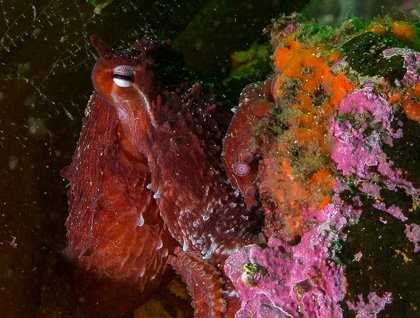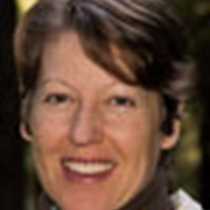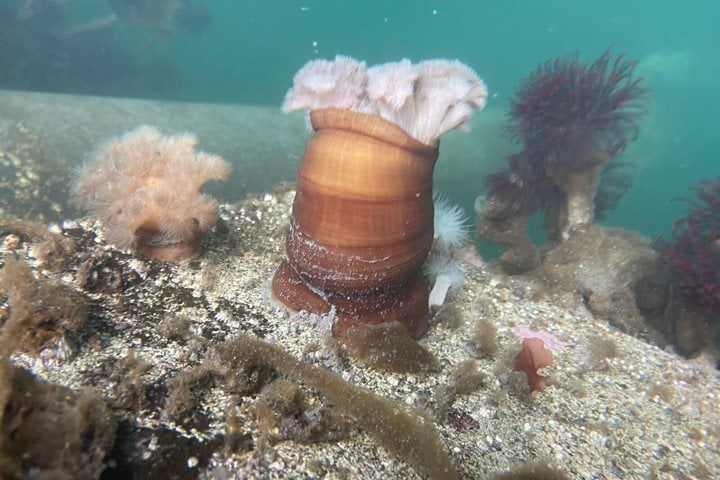“Good morning aboard the National Geographic Sea Bird,” came the expedition leader’s voice over the PA at 6:30 a.m. The announcement came slightly early in hopes of luring those still in bed to come out and join the dozen or so people already on deck. Conditions were beautiful—partly cloudy skies, 50-something degrees, flat calm water, and a humpback whale methodically feeding at the surface. Cabin doors opened, out came people rubbing sleep from their eyes and hearing the “pfffff” sound of the out-blow as the whale’s blow-hole surfaced, followed by the arching hump-back, the dorsal fin, and the broad back sinking below the surface again. Occasionally the whale dove deeper, revealing its tail fluke. We watched for a while in this half-awake mesmerized state until the ship got underway again. The remainder of the morning was devoted to briefings and an introductory photo talk, interspersed with several more looks at humpbacks encountered as we continued north along Chatham Strait. Some distant breaching was seen at one point; and during feeding another whale lay on its back and flipper-flap waved at us (we were certain it was waving specifically at us!). It was a gorgeously mellow first morning of our voyage.
The afternoon was more active. The ship anchored at the entrance to Freshwater Bay along Chichagof Island and we zipped in our expedition landing craft to shore where we spent time exploring the forest and bay of Pavlof Harbor. The hikes were a great introduction to Southeast Alaskan temperate rain forest, initially alongside a salmon stream (though a bit early for salmon yet), and then just inside the forest along bear trails to experience the height and majesty of the Sitka spruce and Western hemlock trees, along with the pungent skunk cabbage and prickly devil’s club. Boot-sucking mud christened shiny new rubber boots, and the naturalists began to share their vast knowledge of the wonders of nature and wildlife that make up this amazing ecosystem. Signs of wildlife abounded including eagle, raven, beaver, brown bear, Sitka black-tailed deer, squirrel, and many other species.
On the water, kayakers explored the stream up to its cascading waterfall, then branched out and paddled along the shoreline across the bay from our landing site. A slight wind and sprinkle accompanied earlier paddlers, but passed through to leave us once again with calm waters, and also a bit of blue sky poking through the shifting layers of high clouds. While we were exploring the waters above, our undersea specialist and purser went exploring below and brought us video and still photos. How surprising to see the rich and colorful marine world, including huge white plumose anemones, sailfin sculpin fish, and two—TWO!—giant Pacific octopus. Wow! One of these octopuses was in her home in a rocky crevice where she’s been seen many times, and on closer inspection a giant sac of eggs was illuminated. Apparently she will stay to protect her eggs until they hatch, not leaving even to eat, and consequently die of starvation at the end of the season. Seems sad to contemplate, though perhaps no sadder than any of our demise. The other octopus, smaller, was out in the open. This photo was taken from the video footage.
At this writing, dinner is being served and National Geographic Sea Bird is headed back out for more adventures. Who knows what we will see next?! (…a minute later: “Oh! A rainbow!” squeals a delighted 10-year old guest, nose to the window glass…)







